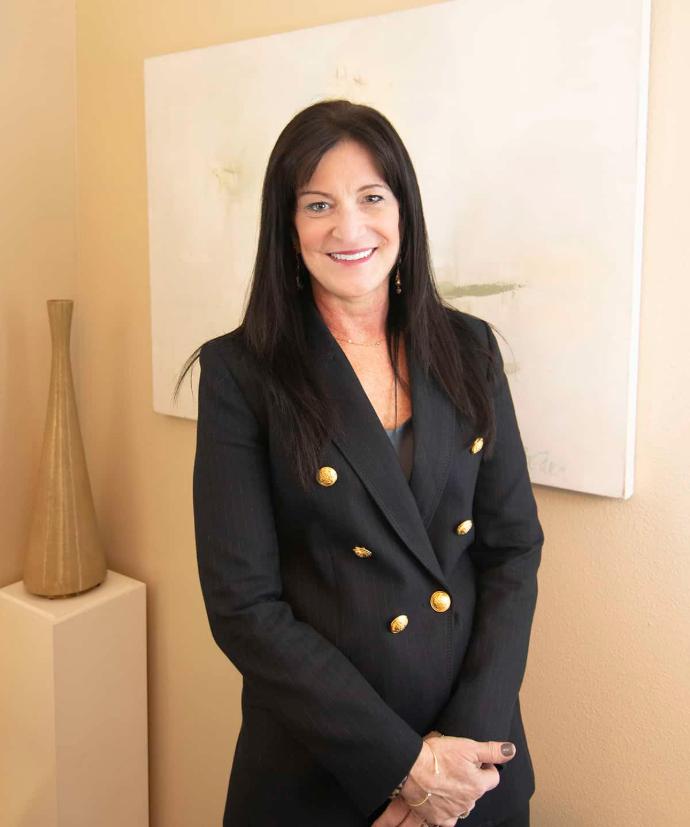
Dr. Rebecca Cohen earned a Bachelor of Science degree in biopsychology at Tufts University, and a Master of Science degree in medical sciences at Boston University based on research completed at Harvard Medical School Department of Neurology.
Dr. Cohen completed her medical degree at Boston
University where she was recipient of the psychiatry
department’s Malamud Award for Excellence. She
began her adult psychiatry training at Hennepin
County Medical Center in Minneapolis, MN, later
transferring to Georgetown University Medical
Center in Washington, D.C. where she served as
Chief Psychiatry Resident at Georgetown Hospital
during her final year. As an interventional psychiatrist
and psychopharmacologist specializing in the
treatment of mood and anxiety disorders as well as a
nationally recognized expert in transcranial magnetic
stimulation (TMS), Dr. Cohen established her private
practice, Cohen & Associates, in 2014 to deliver
top tier Psychiatric evaluations and comprehensive
clinical care. She has expanded the scope of her
practice with the addition of outstanding colleagues
and technologies and is recognized as a top provider
of evidence-based and compassionate care.

Dr. Jordana Hollen earned a Bachelor of Science degree in Psychology from the University of North Carolina at Chapel Hill Honors Program where she graduated Phi Beta Kappa. After completing her Psychiatry residency training at the University of Florida, she returned to North Carolina for private practice. Simultaneously, she served as a Psychiatry preceptor for both Wake Forest and Duke University’s Physician Assistant Programs. Subsequently, she relocated with her family to Florida to work full-time at an outpatient psychiatric practice as both a Staff Psychiatrist and Medical Director.
Dr. Hollen is trained in psychopharmacology,
psychotherapy, and TMS. Dr. Hollen is board certified
by The American Board of Psychiatry and Neurology;
and she specializes in providing outpatient psychiatric
care for adults. Dr. Hollen has experience treating a
variety of mental health concerns with a special focus
on mood and anxiety disorders, as well as a particular
interest in women’s health. She treats a range of
conditions including major depressive disorder,
generalized anxiety disorder, panic disorder, postpartum
depression, bipolar disorder and attention
deficit/hyperactivity disorder.
One major added value of high-density EEG is the ability to perform analyses that are clinically meaningful. For one, there is a need to move away from analysis pipelines that are reference-dependent and that can yield neurophysiologically ambiguous interpretations. With 100 years of EEG now behind us, it behooves the community of EEG users to put into routine practice those analytics that serve the clinical and research communities alike.
In my experience, high-density EEG has been invaluable in better understanding a wide range of sensory, cognitive, and clinical functions. Researchers interested in streamlining or minimizing their montage should, in my view, first conduct the necessary research with high-density coverage to sufficiently understand the underlying neurobiological processes so as to be certain that a lower-density montage is indeed capturing their assumed processes.
Since its FDA approval in the United States in 2008, we, as clinicians, have closely followed the evolution of TMS technology over the past decade. Our goals are to provide the most advanced, state-of-the-art technology for our patients. We leverage current evidence-based recommendations to improve outcomes, as well as improve tolerability during a patient’s treatment course. By utilizing individualized, anatomical measurements for each patient with visor2, we have been able to customize their clinical care and treatment protocols. We know that adding the precision of neuronavigation helps confirm the optimal treatment location and reproducibility during their treatment sessions. It has been exciting to adopt this added technology to our clinical repertoire. The motor mapping feature of visor2 also refines treatment protocols by providing the most sensitive measure of the SMT and in turn, improving patient tolerability.
In 2010, when we first provided TMS treatment, the individual session took 43 minutes and was a “onesize,
fits all” approach to identify the coil location on every patient. Currently, we provide accelerated,
precision-defined theta burst treatment, which takes three minutes and can be performed multiple
times daily.
One of the most essential and rewarding aspects of our work is educating patients about their illness. In our southeast region of the United States, there are many patients who still feel a sense of shame and stigma surrounding their psychiatric symptoms. Education is power; and in our field of medicine, psychoeducation can truly empower patients. One of our goals throughout treatment is to provide a better understanding and appreciation of the biological components of psychiatric disease. This provides the foundation for why we might suggest a certain medication, or why we might suggest a treatment option like brain stimulation. Further, when patients better understand the importance of certain treatment suggestions such as improved sleep hygiene, stress management, exercise, and/or substance use, we see these behavioral changes being integrated and utilized, and therefore, overall improvement in treatment adherence and outcomes.
This is an important, extremely relevant question and one that has been a highly discussed and
debated topic at the last several International Clinical TMS Society meetings. It is our belief that the
precision technology utilized in our TMS program epitomizes safety and reliability. Throughout our
medical training and medical careers, we have evidenced that no person’s anatomy is identical and the
same applies to the intricacies of the brain. There are infinite variations and nuances to neuroanatomy.
Neuronavigation works synergistically with the TMS device to account for these variations, enabling
clinicians to more accurately define treatment location, instead of using standardized measurements.
The evidence is coming, and we are following it closely!
TMS has changed our careers. As psychopharmacologists in private practice, it is increasingly
clear that there is always a percentage of treatment-resistant cases of both major depression and
anxiety disorders. While medications can be extremely beneficial and well-tolerated for some, there
are always patients who cannot achieve full symptom remission (which can invariably lead to illness
reoccurrence), or patients who experience problematic and/or intolerable side effects, leading to a
lack of psychotropic adherence. TMS offers the much-needed, non-pharmacologic option which has
so many patients relieved and clinically improved. Further, TMS has shown to be much more durable compared with other treatment options. In all areas of medicine, patients should have options
for their care.
We have both experienced so many memorable TMS success stories - that is why we are advocates
for brain stimulation and have sought to raise the clinical bar by providing more innovative care
to patients in our region.
The exploding advances in neuroscience are likely going to continue to improve our understanding
and enhance clinical care in the field of psychiatry. Specialists around the world are seeking to
elucidate other effective protocols for psychiatric, neurologic and medical diagnoses. There are many
important indications still in the development pipeline -- we are excited to see what comes next!
ANT Neuro is proud and grateful to collaborate with Dr. Rebecca Cohen and Dr. Jordana Hollen, who we hope to continue to closely work with to continue successfully treating patients through our visor2™ solution.
